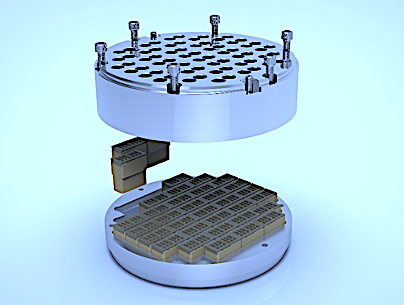This short piece is taking a somewhat different direction than my typical columns and articles for The RAM Review. This week, I’m providing some information on two innovative technologies that could be of interest to reliability-focused engineers in the process industries. While these technologies aren’t new to the marketplace, they may be worth a closer look. That’s because reliability and profitability usually suffer whenever best available technology is not used. Motivated engineers are aware of this and will learn facts about machinery and component upgrade options. Moreover, timely establishment of facts enables these professionals to add value during their entire careers. The following reviews are personal observations of two innovations that have caught my eye, over the past few years, not endorsements.
COMPRESSOR-VALVE TECHNOLOGY
A novel reciprocating-compressor valve technology from Houston-based Zahroof Valves, Inc. is just one innovation that has become a value-adder for plants. If advocating for this type of valve, you might hear concerns voiced by personnel resisting change, and/or shops that see their valve-repair-and-replacement businesses decline after realizing that two world-scale oil refineries are using this technology on recips with ratings as high as 16,000 HP. Z
As shown in Fig. 1, Zahroof’s Modular Reed Valve is a drop-in replacement for traditional plate, ring, poppet and other valves. A diligent researcher will find evidence of measurable efficiency gains over the old-style valves. In many instances, valve life exceeds that of a plant’s predecessor valve styles by 50% or more. It would be a worthwhile exercise to calculate the value of increasing one’s compressor MTBR, the mean time between repairs, from previous “X” months to now (1.5 X or even 2X months). Or to determine the savings if the power efficiency of a plant’s process recips were to increase by even as little as one percent.
For more information, visit zahroofvalves.com.

Fig. 1. Modular Reed Valve for reciprocating compressors.
(Source: Zahroof Valves, Inc., Houston, TX)
STEAM-GLAND TECHNOLOGY
My second example, from UK-based AESSEAL, Inc., traces its lineage to dry gas seals (DGSs). About 25 years ago, I began considering DGS seals for turbo-compressors, but also served as a technical adviser to litigants that were able to prove flaws in some DGS applications. Again, that’s water under the bridge, because today’s competent reliability professionals know what to avoid and what to buy. AESSEAL has two test stands for DGSs and can refurbish the products of all major worldwide competitors. The company can also tell you what distinguishes risky designs from excellent ones. Drawing on its DGS experience, this manufacturer has steam glands for small steam turbines, They have proven to be superb replacements for segmented carbon ring seals that were first used in the 1920s.
For more information, visit aesseal.com.

Fig. 2. Cross-section view of a modern steam-turbine gland shows its
non-rotating flexing bellows components, sealed and centered
by two U-cup-style high-temperature elastomer parts.
(Source: AESSEAL, Inc., Rotherham, UK, and Rockford, TN)

Fig. 3. Steam-seal gland based on DGS compressor technology.
(Source: AESSEAL, Inc., Rotherham, UK, and Rockford, TN)
COMING UP
Next week, I’ll go into detail about a novel clamping method for coupling hubs.TRR
Editor’s Note: Click Here To Download An Updated (May 2020) List Of Heinz Bloch’s 22 Books
ABOUT THE AUTHOR
Heinz Bloch’s long professional career included assignments as Exxon Chemical’s Regional Machinery Specialist for the United States. A recognized subject-matter-expert on plant equipment and failure avoidance, he is the author of numerous books and articles, and continues to present at technical conferences around the world. Bloch holds B.S. and M.S. degrees in Mechanical Engineering and is an ASME Life Fellow. These days, he’s based near Houston, TX. Email him at heinzpbloch@gmail.com.
Tags: reliability, availability, maintenance, RAM, compressors, valves, steam glands, dry-gas seals



